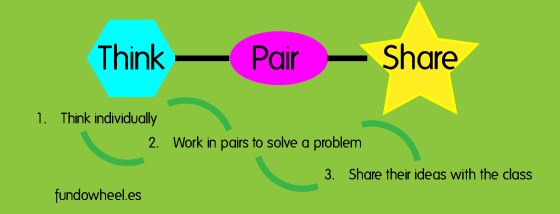![]()
 How do we learn? First we should distinguish short-term memory from long-term memory.
How do we learn? First we should distinguish short-term memory from long-term memory.
Short-term memory stores all the information that has come from our eyes, ears… this is the input that we get from our five senses, taking into account that normally the more important is the visual input although according to Gardner «Frames of Mind: The theory of multiple intelligences» (1983) students have several different ways of processing information and these ways are relatively independent of one another.
The STM stores what are thinking at the time and it is easily displaced by new information.
On the other hand, the long-term memory is the contents of the STM those are passed on, these contents are structured and it takes time.
Bear in mind that it is impossible to remember something that you do not properly understand.
If you give information too fast, the student won’t have time to process it in the STM, relax and use the «silent and speak slowly» let student think and reflex about this new infromation.
Help students to understand and help then to pass on LTM. I remember when I used in my classes «Do you understand» and everyone said «Yes, we do», It doesn’t work, better use «content checking questions» (CCQ)
- What is the difference between LTM and STM?
- What do you need to pass on information from STM to LTM?
- Will the teacher help talking slowly and giving time «silent»?
- Can you transfer any information that you don’t properly understand to LTM?
As you can see, this is the first step to learn:
Get new input – Understand – Store in the LTM
Now it is time to «recall«, we only remember useful information so recall the information regularly. Use repetition, every first minutes in your class recall the information that you think important.
- Don’t cover new material too quickly
- Give «silent» after important information and time to students to process the information
- Recall regularly, repetition
¿Cómo aprendemos? En primer lugar hay que distinguir la memoria a corto plazo de la memoria a largo plazo.
La memoria a corto plazo (STM) toma toda la información que ha llegado a nuestros cinco sentidos: vista, olfato, oído, gusto y tacto. Teniendo en cuenta que se suele prestar más importancia a información visual y la teoría de las inteligencias múltiples de Gardner (1983) los estudiantes tienen diferentes maneras de procesar la información y estas formas son relativamente independientes entre sí.
El STM almacena lo que están pensando en el momento y se desplaza fácilmente de un estímulo a otro por la nueva información.
Por otro lado, la memoria a largo plazo (SLM) es el contenido de la STM transferido al SLM, estos contenidos están estructurados y se necesita tiempo para interiorizarlo.
Hay que tener en cuenta que es imposible recordar algo que no se ha entiende correctamente.
Si se introduce la información demasiado rápido, el estudiante no tendrá tiempo para procesarlo en el STM, es importante crear un ambiente relajado y proclive para transferir contenidos al SLM, utilizar el silencio para dejar tiempo a la reflexión y hablar despacio puede ayudar a comprender, dejar que los estudiantes piensan y reflexionen añade un mayor significado. Por otro lado la introducción de la emoción y el sentimiento garantizan una mezcla correcta.
Ayudar a los estudiantes a comprender es crucial para transmitir LTM. Si preguntamos en clase «¿Lo habéis comprendido?» Todo el mundo dirá: «Sí, sí», y claro está habrá dudas, sería mucho mejor utilizar «preguntas de análisis de contenido» (CCQ)
Deberíamos preguntarnos:
¿Cuál es la diferencia entre el LTM y STM?
¿Qué se necesita para transmitir información desde STM a LTM?
¿Podemos ayudar hablando lentamente y dando tiempo «silencios» entre las expliaciones?
¿Podemos transferir contenidos qué no entendemos al LTM?
El proceso de aprendizaje continuaría esta línea:
Introducir contenido – Comprender – Interiorizar en el LTM
Ahora es el momento de «recuperación», solemos recordar sólo información que consideramos útil, si queremos interiorizar algún contenido debemos de repetir de manera regular la información. Usa la repetición, todos los primeros minutos de clase inviértelos en recordar la información que considere más importante de la sesión anterior.
- Permite tiempo en la introducción de nuevo contenido para su comprensión, reflexión e interiorización
- Utiliza el «silencio» después de información importante y permite procesar la información
- Repasa los contenidos trabajados periódicamente, utiliza la repetición


Debe estar conectado para enviar un comentario.